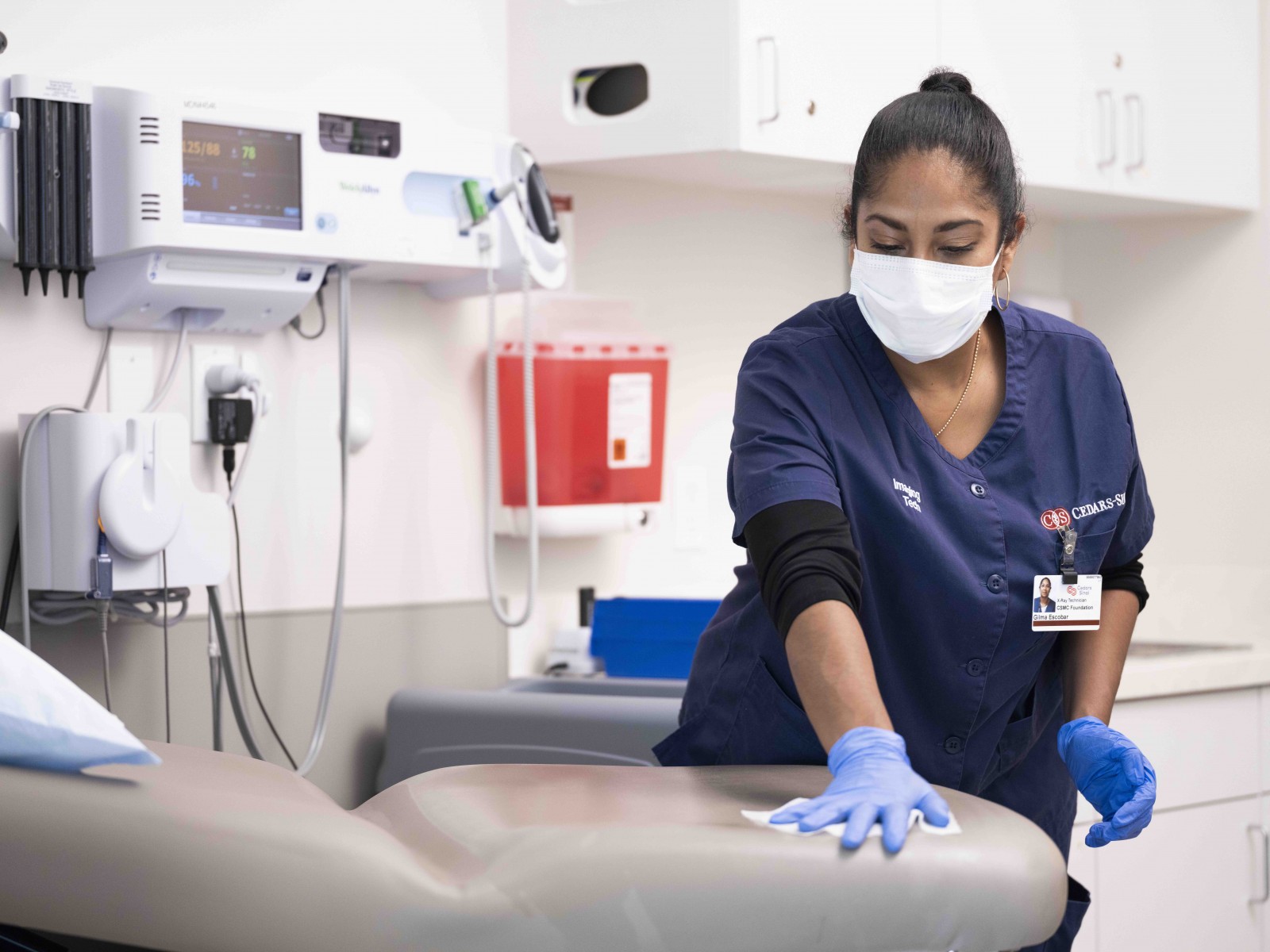LOS ANGELES (Oct. 26, 2020) — More than half a year into the COVID-19 (coronavirus) pandemic, healthcare providers have adapted by offering virtual visits and observing strict safety measures in clinics. But even with those innovations, many patients still don’t feel comfortable visiting an urgent care office for necessary in-person treatment.
In the U.S., total urgent care center volumes were down 50% in the spring, even with an influx of COVID-19 patients, according to consulting firm Advisory Board. Although patient visits have largely rebounded this fall, Cedars-Sinai is still seeing a lower number of patients at its urgent care locations. Fear may be the culprit, Cedars-Sinai experts say.
“Some patients have expressed concerns about safety because they didn’t understand the precautions we put in place to prevent the spread of COVID-19,” said Stacy Tarradath, MD, division chief of Urgent Care at Cedars-Sinai. “But not seeking treatment for a medical condition can be more harmful than the potential risk of catching the coronavirus, given all the stringent safety measures we follow at our offices.”
If left unattended, urgent health issues can quickly become emergencies, Tarradath said. Skin cuts or lacerations needing more than a bandage can become infected, requiring antibiotics, a trip to the emergency department or a hospital stay. Unresolved abdominal pain could signal severe inflammation of the intestines or an abscess that could rupture. A simple sprain could snowball into a long-term issue causing joint damage. An untreated urinary tract infection can spread to the kidneys, leading to increased pain and possibly even sepsis.
“These consequences are not worth delaying care,” Tarradath said. “When patients arrive at our urgent care offices and see what we’ve done for their safety, they really appreciate it.”
Precautions include:
- Performing temperature checks for all people entering Cedars-Sinai facilities, including employees.
- Rapidly identifying and isolating patients with potential COVID-19 symptoms before they enter the waiting room.
- Requiring masks and physical distancing in waiting and clinical areas.
- Limiting visitors to ensure physical distancing.
- Enhancing cleaning and disinfection of all common areas and clinical spaces.
- Employing telemedicine options, such as Video Visit Now via MyCS-Link, to provide on-demand care remotely for many nonemergency medical needs.
In fact, many patients face a greater risk of catching COVID-19 in their own home than at the doctor’s office. Studies have shown that the largest risk factor for contracting the novel coronavirus is prolonged, close contact with others who have it, which occurs predominantly in households, according to Jonathan Grein, MD, director of Hospital Epidemiology at Cedars-Sinai.
“The largest risk for exposure is people spending large amounts of time in close contact with others indoors in poorly ventilated spaces,” Grein explained. “Risk in outdoor areas drops dramatically as well as risk in environments like healthcare settings because of all the safety measures in place and access to masks and hand hygiene.”
He cited mounting evidence compiled in a recent literature review published in the Annals of Internal Medicine that showed:
- Wearing masks in the community and in healthcare settings reduces the spread of the novel coronavirus.
- Cleaning surfaces with recommended disinfectants eliminates the virus.
- Close proximity to others and poor ventilation increases the likelihood of infection.
“What we’ve learned through the course of the pandemic is that transmission of COVID-19 is extremely unlikely when these safety measures are put in place,” Grein said. “While you can never completely eliminate the risk of infection from the novel coronavirus, you can significantly lower it.”
Read more on the Cedars-Sinai blog: What’s the Difference Between a Cold, the Flu and COVID-19?
